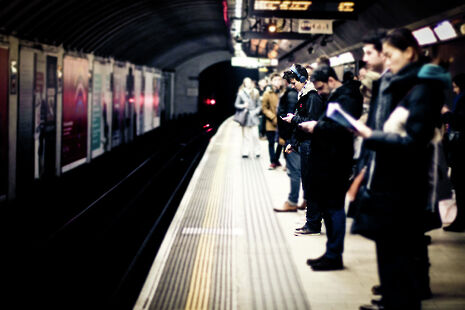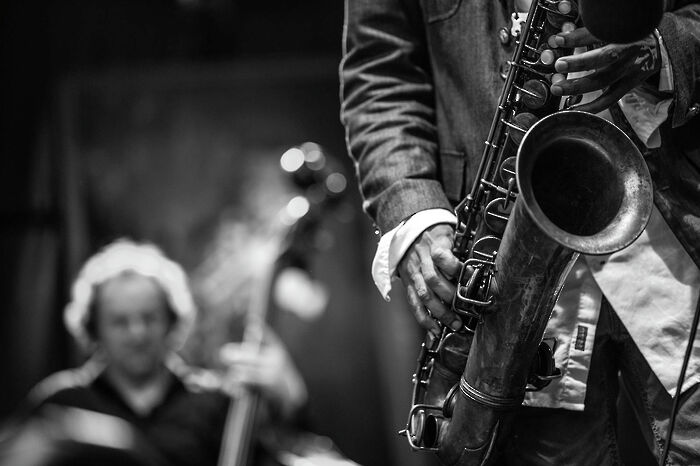Music in public spaces
William Poulos explains how recorded music in public has become one of the causes of the decline in the nation’s mental health

In the old days of the BBC, radio programmes would end with a period of silence so that the listeners could reflect on what they had just heard. Now, silence is like the yeti; a few people claim it survives in a remote North American forest, but no one believes them. Understandably absent from the radio (where it’s referred to as “dead air”), silence has been chased out of public places by traffic, power tools, and insolently peevish children. I can just forgive the children, but have limitless ire for the worst offender: recorded music.
Recorded music has been ubiquitous in shops and stadiums for at least a decade. Unasked, and from an unknown source, loud banalities are sent through the air as aural anodynes. Silence is now something we fear because of its association with awkwardness, solemnity, or emotional tension. According to unknown persons, music is the best defence against these threats to public health. The recorded music played in shops and other public places annoys me so much that, without knowing it, I audibly grind my teeth, cumulating the effect by increasing the level of noise. But why is it that, when I’m on the tube, the music erupting from someone’s headphones annoys me so much more than the violinist at the bottom of the escalators at Tottenham Court Road?
Recorded music is completely removed from its social origins
I suspect the answer has something to do with social reasons. Music has been traditionally used to mark social events such as births, marriages, coronations, and harvests; live music, whatever its quality, is a social event itself. For thousands of years writers have used musical harmony as a metaphor for social harmony; in novels, the usual way for having all the characters meet is to have them attend a concert or a ball. Recorded music, on the other hand, is completely removed from its social origins. The instruments are recorded in isolation, and recording technology is now so slick that it can be hard to hear that there are humans playing those instruments. Its repetitions, without the variety which naturally occurs in human performance, remind one of the products of a factory.
Additionally, the music that we listen to now forms a part of our identity. With an unprecedented amount of music available to us, our tastes can become more varied and peculiar. Media such as Spotify and YouTube abet this because they allow us to choose the playlist: on older media such as radio, the songs were chosen for us, or we were limited by the CDs stocked at our local shop. So, when the man (it’s always a man) on the tube has his headphones on too loud, “his” music is invading my space. He is also, unwittingly, excluding everyone around him: music which was once social is now his alone, and its volume tells the rest of the carriage that he, the man with the headphones, does not want to, and will not, talk to anyone else.
This is perhaps a sensible approach to take when on the tube, but shows that increasingly music, rather than being considered a form of communication, is used to prevent communication. As we push music into the background, and expect it there, we devalue it: we deny that it has anything important to say and that it is worth our attention. That nothing played in shops and stadiums warrants our attention is because music is now made to be played in the background. 15 years ago, albums were mixed to sound their best coming out of laptop speakers because that was the medium through which most people would listen to them. It wouldn’t surprise me if albums were now mixed with headphones and shops considered as the most popular media on the assumption that music is only a complement to the important activities of texting and shopping. But if we believe that music is something more than that, that it can bear a message worth hearing, we must give it its necessary complement: silence.
 News / Caius mourns its tree-mendous loss23 December 2025
News / Caius mourns its tree-mendous loss23 December 2025 News / Cambridge welcomes UK rejoining the Erasmus scheme20 December 2025
News / Cambridge welcomes UK rejoining the Erasmus scheme20 December 2025 News / CUP announces funding scheme for under-represented academics19 December 2025
News / CUP announces funding scheme for under-represented academics19 December 2025 News / King appoints Peterhouse chaplain to Westminster Abbey22 December 2025
News / King appoints Peterhouse chaplain to Westminster Abbey22 December 2025 Interviews / Politics, your own way: Tilly Middlehurst on speaking out21 December 2025
Interviews / Politics, your own way: Tilly Middlehurst on speaking out21 December 2025









